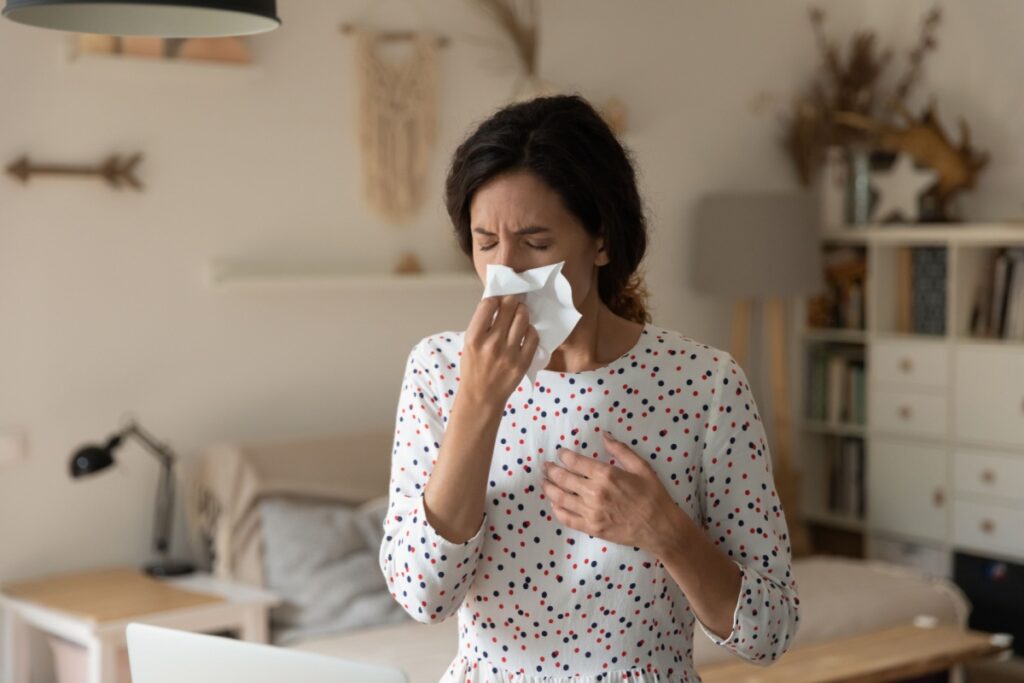We can’t see the air we breathe, and this, unfortunately, means we could be inhaling harmful pollutants on a regular basis without even realizing it. The air in your home, where you likely spend most of your time, could be filled with contaminants that affect your health and well-being. But here’s the good news: we can take steps to improve the air we breathe. The first step is understanding the signs of poor indoor air quality.
Signs Your Home Has Poor Indoor Air Quality
Many people are surprised to learn that indoor air can often be more polluted than outdoor air, even in urban areas. This is because our homes can trap pollutants, allowing them to build up over time. From dust and pet dander to more serious contaminants like carbon monoxide and radon, the potential sources of indoor air pollution are numerous. For this reason, it’s important to be extra vigilant about noticing the signs that your home has poor air quality.
Unpleasant, Lingering Smells
One of the most common signs of poor indoor air quality is the presence of persistent odors. If you notice musty, stale, or unpleasant smells that linger even after cleaning, it could indicate a problem with your home’s air. These odors might be caused by mold growth, inadequate ventilation, or other pollutants circulating through your living space. Pay attention to any unusual smells, especially those that seem to get stronger when your heating or cooling system is running.
Dust and Airborne Particles
While some dust is normal, excessive amounts that seem to reappear quickly after cleaning could signal a problem with your air filtration system. Check your air filters regularly — if they’re becoming dirty faster than usual, it might be time to investigate further. Additionally, consider upgrading to high-efficiency air filters to help capture more airborne particles and improve the overall air quality in your home.
Unwavering Health Issues
If you or your family members experience frequent headaches, fatigue, dizziness, or respiratory issues like coughing and sneezing while at home, the air you’re breathing could be the culprit. These symptoms might improve when you leave the house and worsen upon return. In some cases, long-term exposure to poor indoor air quality can lead to more serious health problems, including respiratory infections, asthma, and even lung cancer.
High or Low Humidity Levels
Humidity levels play a significant role in indoor air quality. Both excessively high and low humidity can create problems. For example, high humidity can promote mold growth and dust mite proliferation, while low humidity can lead to dry skin, irritated eyes, and respiratory discomfort. Invest in a hygrometer to monitor your home’s humidity levels and aim for a range between 30% and 50%. If you consistently struggle with humidity issues, consider using a dehumidifier or humidifier as needed.
Visible Mold Growth
Mold thrives in damp environments and can release spores into the air, potentially causing allergic reactions and respiratory issues. Check areas prone to moisture, such as bathrooms, basements, and around windows, for any signs of mold growth. If you spot mold, it’s essential to address the underlying moisture problem and remove the mold safely to prevent it from spreading.
Presence of Carbon Monoxide
Carbon monoxide is an odorless, colorless gas that can be deadly if it accumulates in your home. While you can’t see or smell it, there are signs that might indicate its presence. If you experience unexplained nausea, dizziness, or flu-like symptoms that improve when you leave the house, it could be a sign of carbon monoxide exposure. It’s crucial to have working carbon monoxide detectors installed on every level of your home and to have your fuel-burning appliances inspected regularly.
Stuffy Rooms
Inadequate ventilation can exacerbate indoor air quality issues. If your home feels stuffy or the air seems stagnant, it might be a sign that you need to improve air circulation. Make sure your ventilation systems are working properly, and consider opening windows when weather permits to allow fresh air to flow through your home.
Poor Outdoor Air Quality
The quality of the air outside can also impact your indoor air. If you live in an area with high pollution levels or near sources of industrial emissions, your indoor air quality may suffer as a result. Keep an eye on local air quality reports and consider using an air purifier to help filter out pollutants that may be entering your home from the outside.
Test Your Home’s Air to Pinpoint Problems
If you’re concerned about the air quality in your home, consider having it professionally tested. Air quality testing can identify specific pollutants and their concentrations, helping you pinpoint the source of the problem and develop an effective solution. The Environmental Protection Agency (EPA) provides guidelines for indoor air quality and can be a valuable resource for homeowners looking to improve their living environment.
Improve Your Home’s Air Quality Today
By being aware of the signs of poor air quality and taking proactive steps to address them, you can create a healthier living environment for you and your family. If you’ve noticed any of the above issues in your home or if you’re simply interested in improving your indoor air quality, it’s time to take action.
For Santa Fe indoor air quality solutions, don’t hesitate to reach out to the experts at Roadrunner Air Conditioning, Heating & Plumbing. Our team can assess your home’s air quality, identify potential issues, and provide tailored solutions to ensure you’re breathing clean, healthy air. From installing high-efficiency air filters and air purifiers to addressing ventilation issues, we have the expertise to help you create a safer, more comfortable home environment. Contact us today for better indoor air!

